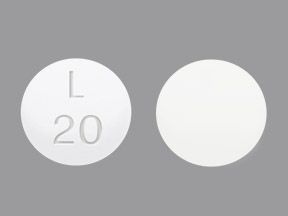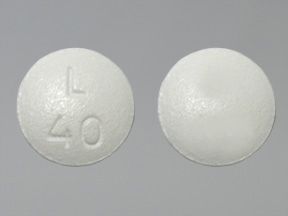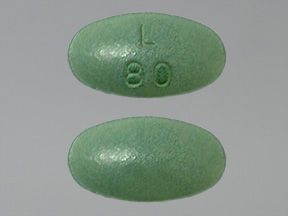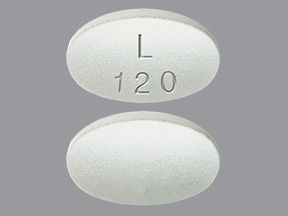Latuda dosage
Latuda (lurasidone) is a prescription brand-name medication. The Food and Drug Administration (FDA) has approved it to treat:
- Major depressive episodes linked to bipolar I disorder. The drug is for use in adults as well as children ages 10 years and older.
- Schizophrenia. The drug is for use in adults as well as children ages 13 years and older.
Latuda comes as an oral tablet. It contains the active drug lurasidone and belongs to a class of drugs called atypical antipsychotics. (A class of drugs is a group of medications that work in a similar way.) Latuda is currently available only as a brand-name medication. It doesn’t come in generic form.
For information on the dosage of Latuda, including its form, strengths, and how to take the drug, keep reading. For a comprehensive look at Latuda, see this article.
This article describes typical dosages for Latuda provided by the drug’s manufacturer. When taking Latuda, always follow the dosage prescribed by your doctor.
Latuda is approved to treat major depressive episodes linked to bipolar I disorder in adults and certain children. The drug also treats schizophrenia in adults and certain children.
Latuda form
Latuda comes as an oral tablet.
Latuda strengths
Latuda tablets are available in five strengths: 20 milligrams (mg), 40 mg, 60 mg, 80 mg, and 120 mg.
Typical dosage guide
The typical dose range for Latuda is 20 mg to 120 mg. There is no “average dose” of the drug. Typically, your doctor will start you on the lowest dose of Latuda for your condition. Then they’ll adjust it over time to reach the amount that’s right for you. Your doctor will ultimately prescribe the smallest dosage that provides the desired effect.
Your doctor will monitor how well Latuda is helping ease symptoms. You may have a dose increase if they think it will help with the condition Latuda is treating.
The following information describes dosages that are commonly used or recommended. However, be sure to take the dosage your doctor prescribes for you. Your doctor will determine the best dosage to fit your needs.
Dosage for bipolar depression
Latuda treats major depressive episodes linked to bipolar I disorder in adults. This stage in bipolar I disorder may also be called bipolar depression. Latuda may also be used in adults with the drugs lithium or valproate for this condition.
For these purposes, the typical starting dosage of Latuda for adults is 20 mg, once per day. The maximum Latuda daily dose is 120 mg.
Dosage for schizophrenia
In adults, the typical starting dosage for Latuda for schizophrenia is 40 mg, once per day. The maximum Latuda daily dose is 160 mg.
Latuda dosages vary depending on several factors. (See the “Factors that can affect your dosage” section below.) Your doctor will determine the dosage that’s best for you.
When to take Latuda
You’ll likely take Latuda once daily. Try to take the drug at about the same time each day. By doing this, the level of the drug in your body can stay constant and work effectively.
You should take Latuda with a meal or large snack of at least 350 calories. This helps Latuda stay in your system long enough for your body to absorb the full dose.
Long-term use
Latuda is meant to be used as a long-term treatment. If you and your doctor determine that Latuda is safe and effective for you, you’ll likely take it long term.
Children’s dosage
Here’s some information about Latuda dosages in children.
Children’s dosage for bipolar depression
Latuda treats major depressive episodes linked to bipolar I disorder. This stage in bipolar I disorder may also be called bipolar depression. The drug is approved for use in children ages 10 years and older.
For this purpose, the typical starting dosage is 20 mg, once per day. The maximum Latuda daily dose for this age group is 80 mg.
Latuda dosages vary depending on several factors. (See the “Factors that can affect your dosage” section below.) Your child’s doctor will determine the dosage that’s best for your child.
Children’s dosage for schizophrenia
Latuda is approved to treat schizophrenia in children ages 13 years and older. For this purpose, the typical starting dosage is 40 mg, once per day. The maximum daily Latuda dose for this age group is 80 mg.
Latuda dosages vary, depending on several factors. (See the “Factors that can affect your dosage” section below.) Your child’s doctor will determine the dosage that’s best for your child.
Dosage adjustments
Certain conditions may affect how your body responds to Latuda. Your doctor may reduce your dosage if you have problems with your liver or kidneys.
Also, some drugs may cause you to have too much or too little Latuda in your body. Certain medications that affect an enzyme in the body called CYP3A4 can interact with Latuda. To learn more about the drugs that can interact with Latuda, see this article.
It’s important to talk with your doctor about all medications that you take so they can increase or decrease your dosage as needed.
The Latuda dosage your doctor prescribes will depend on several factors. These include:
- the type and severity of the condition you’re using Latuda to treat
- your age
Other medical conditions you have can also affect your Latuda dosage. For more information, see “Dosage adjustments” in the “Dosage” section above.
If you miss a dose of Latuda, take it as soon as you remember. If it’s almost time for your next dose, don’t “double up” on your dose. Just take the next dose as you normally would. If you have questions about when to take a missed dose, talk with your doctor or pharmacist.
To help make sure that you don’t miss a dose, try using a medication reminder. This can include setting an alarm or timer on your phone or downloading a reminder app. A kitchen timer can work, too.
Here are some frequently asked questions about Latuda and their answers.
What’s the Latuda dosage for bipolar 2 disorder?
Latuda isn’t approved to treat bipolar 2 disorder (also called bipolar II disorder). But some doctors may prescribe Latuda off-label for bipolar 2 disorder. Off-label use is when a drug that’s approved to treat one condition is used to treat a different condition.
If you are interested in taking Latuda for bipolar 2 disorder, talk with your doctor.
Can I chew, split, or crush Latuda?
No. You shouldn’t chew, split, or crush Latuda tablets. Be sure to swallow them whole.
If you have trouble swallowing pills, talk with your doctor or pharmacist. They may be able to suggest ways to make medication easier to take.
Latuda comes as an oral tablet that you swallow. You should take the drug with a meal or large snack of at least 350 calories. This helps Latuda stay in your system long enough for your body to absorb the full dose.
You’ll likely take Latuda once daily. Try to take the medication at about the same time each day. By doing this, the level of the drug in your body can stay constant and work effectively.
In clinical studies, people taking Latuda did not misuse the drug. But because of the way the medication acts on the brain, it could lead people to misuse Latuda.
If you have misused drugs before, talk with your doctor. They can advise you on how to use Latuda safely.
It’s important that you don’t use more Latuda than your doctor prescribes. For some medications, taking more than the recommended amount may lead to side effects or overdose.
If you take more than the recommended amount of Latuda
Call your doctor right away if you believe you’ve taken too much of Latuda. Another option is to call the American Association of Poison Control Centers at 800-222-1222 or use its online tool. If you have severe symptoms, immediately call 911 or your local emergency number, or go to the nearest emergency room.
The dosages in this article are typical dosages provided by the drug manufacturer. If your doctor recommends Latuda for you, they will prescribe the dosage that’s right for you. Always follow the dosage that your doctor prescribes for you.
As with any drug, never change your dosage of Latuda without your doctor’s approval. If you have questions about the dosage of Latuda that’s right for you, talk with your doctor.
Besides learning about dosage, you may want other information about Latuda. These additional articles might be helpful to you:
- More about Latuda. For information about other aspects of Latuda, refer to this article.
- Details on bipolar disorder and schizophrenia. For details on bipolar disorder, see our list of bipolar disorder articles. To learn more about schizophrenia, see our list of schizophrenia articles.
Disclaimer: Medical News Today has made every effort to make certain that all information is factually correct, comprehensive, and up to date. However, this article should not be used as a substitute for the knowledge and expertise of a licensed healthcare professional. You should always consult your doctor or other healthcare professional before taking any medication. The drug information contained herein is subject to change and is not intended to cover all possible uses, directions, precautions, warnings, drug interactions, allergic reactions, or adverse effects. The absence of warnings or other information for a given drug does not indicate that the drug or drug combination is safe, effective, or appropriate for all patients or all specific uses.




